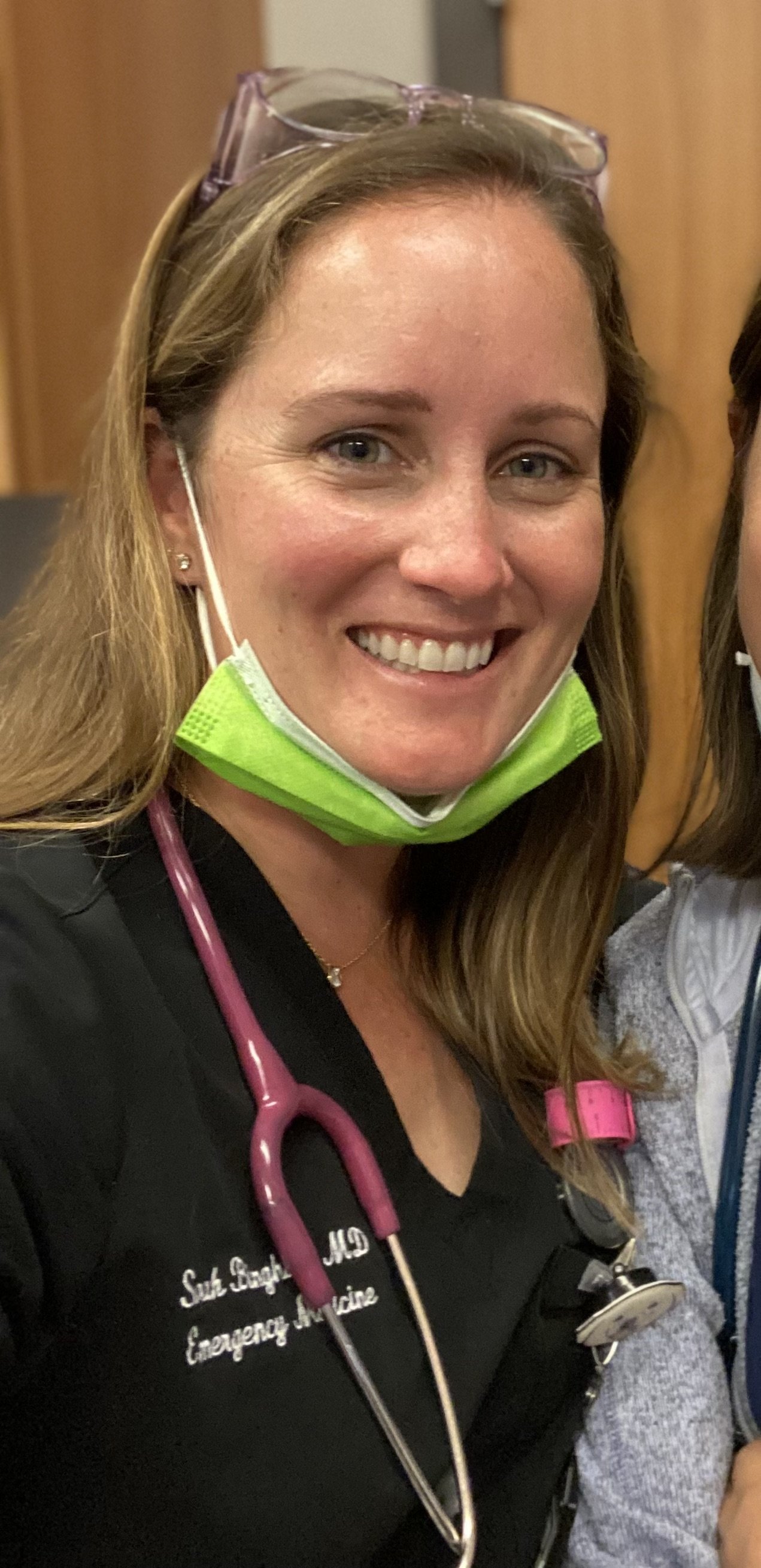Going to the Doctor
Thanks for joining us!
This episode was written by Kara and voiced by Kara and T.
Episode art was drawn by Jean.
It was originally released in July 2024.
— Join us during our visit with Dr. Sarah! —
We are SO lucky that we were visited in this episode by our friend, Dr. Sarah!
Dr. Sarah is a pediatric emergency physician at the University of Alabama at Birmingham.
She kindly answered a whole bunch of questions from both Kara and T, including what emergency room doctors help with, how stitches work, how long kids stay when they go to the hospital for an emergency and whether their grownups can stay with them, and what we can keep in mind to be safe so we don’t need to visit the emergency room!
Among the many helpful things Dr. Sarah shared with us were the reminders that emergency doctors are just like your pediatrician, they just want you to be ok, and that you can always ask questions and tell them when you’re nervous or scared. They are there to help you!
— Check out these books about doctors —
Click on each photo for a link to the book
It feels borderline unfair to recommend this book because it cannot be bought on its own, but it’s really one of the best we’ve come across to explain a visit to the doctor to young kids. So it’s worth keeping an eye out for it to borrow or pass down from friends. Right now, it can only be purchased as part of Lovevery’s Realist Play Kit.
— Encourage your little doctors with these kits —
Elmo goes to the doctor in this Sesame Street episode
— Going to the Doctor Episode Summary —
Doctors know so much! —
Doctors have learned about all of the parts of the body because it’s their job to help our bodies be healthy.
They know all about the outside parts that we can see – our heads, arms, legs, skin; as well as our inside parts – lungs, heart, muscles, tissue, brain. How many of those parts can you name?
We say that doctors practice medicine, which is an interesting word to use, because we usually use that word for doing something like learning to tie your shoelaces or a new sport.
Doctors can help us if we’re sick —
If you’re sick, you may take medicine to help you feel and get better. We talked to T’s doctor before giving her medicine, to make sure that it’s the right thing for her to take.
In order for grownups and the doctor to know what to do to help, we need to know your symptoms. A symptom is an unusual feeling or experience that tells us we may be sick. They can be things like a cough, sore throat, runny nose, being extra tired, or a pain in your body.
We can sometimes get sick by touching things and then touching our face, so it’s so important to wash our hands well and often! We can also get sick if someone sneezes on us, so please sneeze into your elbow!
When we check in with the doctor, we may have a phone call or video call, OR we may go see them in person. We tell them what’s going on and they may ask to see the parts of your body that don’t feel right – they may look in your ear or listen to you cough.
Sometimes we see doctors even if we’re not sick! —
People also go to the doctor for a “well visit” or “check up”, to see how your body is growing. For kids, these visits are often once a year.
Doctors use special tools to examine you, like a pointy flashlight to see in your ears, or a stethoscope to listen to your heartbeat. They may take your blood pressure with a special cuff and see how much you weigh and how tall you are.
Sometimes you need to get a shot during these visits. This isn’t very fun, but it’s important to help you stay healthy, and it’s over quickly!
Doctors can specialize – learn a lot about one part of the body —
Some people have ailments that they live with throughout their lives. They may go more checkups, or have their own special doctor.
There are doctors for noses, bones, brains. Doctors who do operations. Doctors who help deliver babies. Doctors who treat diseases inside our bodies that we can’t see. Which part of the body would you focus on, friends?
Doctors who only treat kids – those doctors are called pediatricians.
Emergency rooms have doctors ready to help anyone at any time! —
Did you know that when we hear an ambulance siren, they’re headed to an emergency room? It’s a special part of the hospital where they’re ready to treat people quickly.
An emergency is when something happens that we didn’t know would happen in that moment, a dangerous situation that needs to be dealt with, fast.
When people have accidents - they fall down and break a bone or are bleeding a lot, they need help from a doctor right away. Not every emergency means you have to ride in an ambulance, but it will usually mean you go to the emergency room.
Being an emergency room doctor is a special kind of doctor because you have to deal with so many different kinds of things at one time.
We are SO excited to talk with our friend, Dr. Sarah, we is an emergency room pediatrician! She answered so many questions that both T and Kara had.







